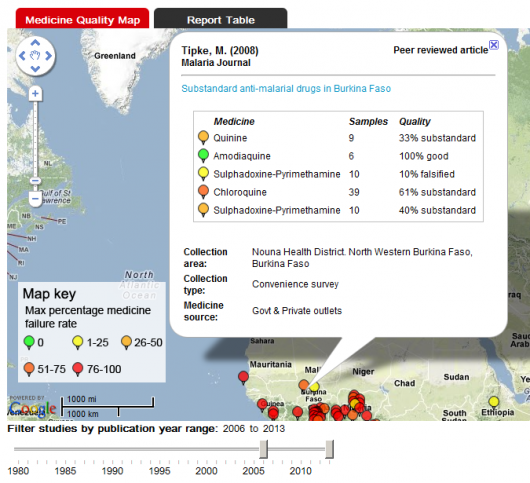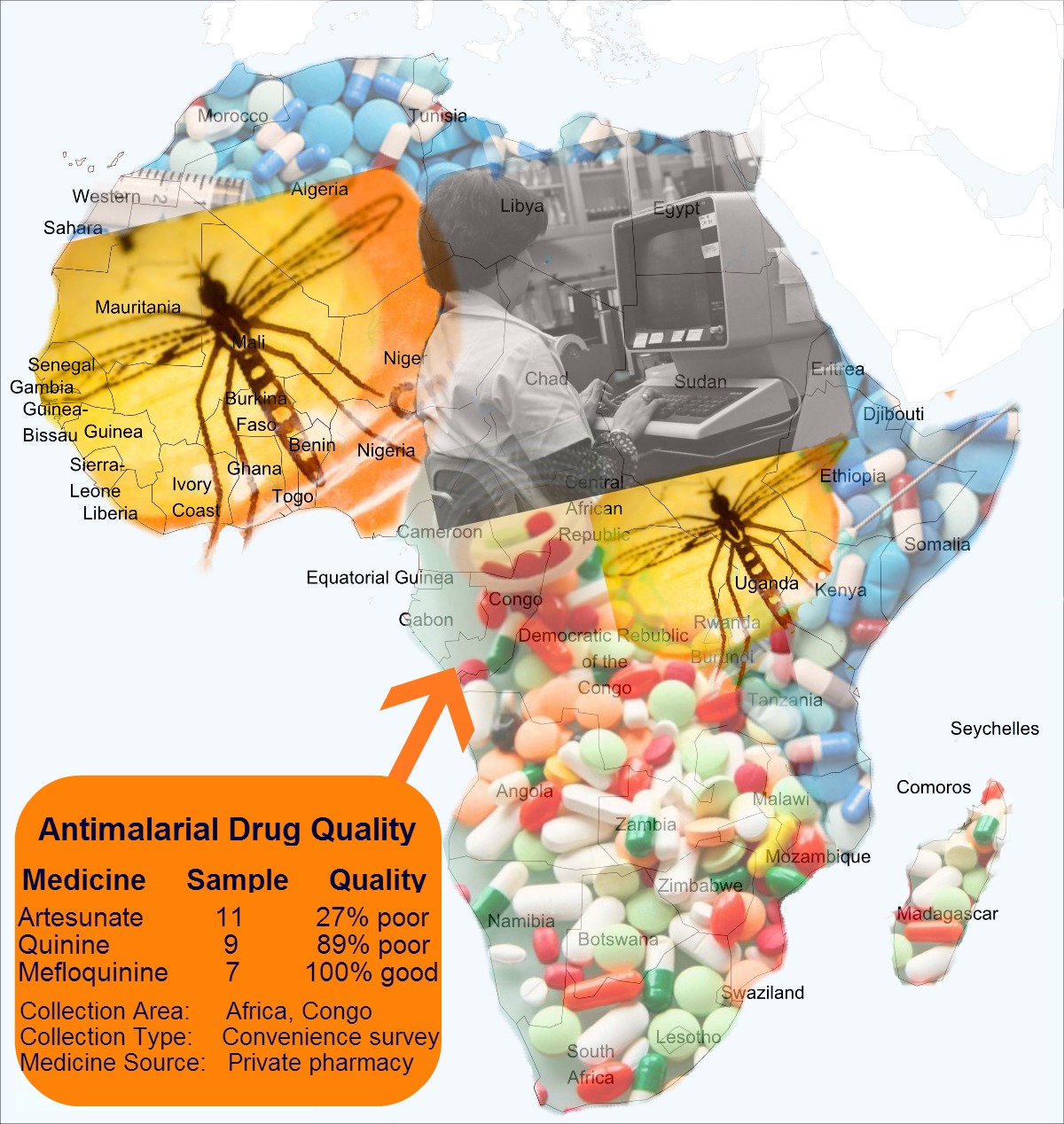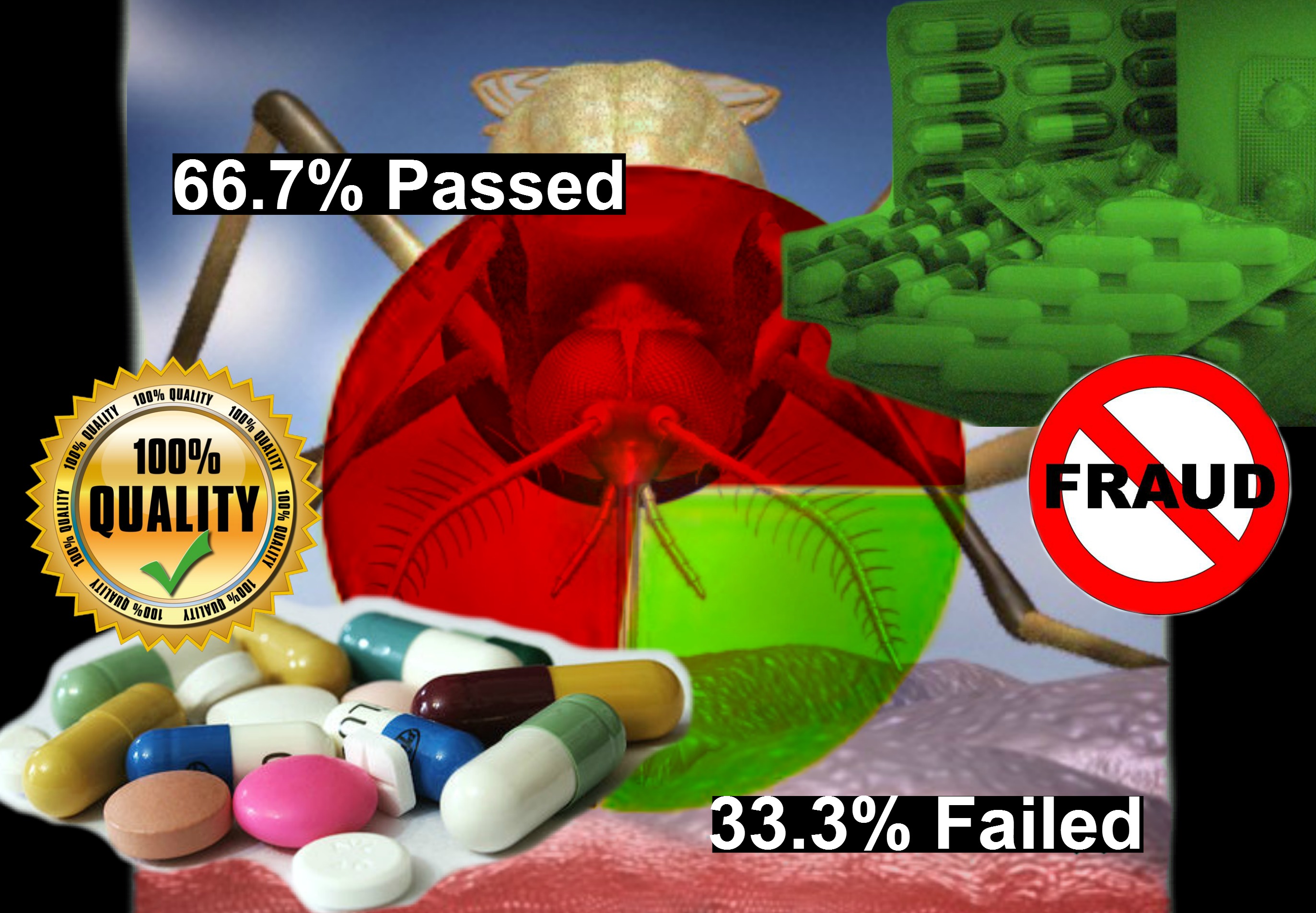New open access database puts quality of anti-malarials on the map
Everyone has the right to safe, affordable, effective, and quality medicines. However, many are being denied this right. Over the last decade there has been a renewed focus on the importance of drug quality. Government bodies have been found guilty of slacking in their obligations to human rights policy.
Quality control has been slipping off the agenda. Nearly a third of antimalarial medicines have failed quality tests due to poor packaging and incorrect levels of the active ingredients. A review of drug analyses, published in Malaria Journal, concludes that the distribution of falsified and substandard medicines threatens lives, putting patients’ health at risk and increasing the likelihood of malaria resistance.
This neglected public health issue is not new. Reports of falsified cinchona bark date back to the 1600s and cases of falsified quinine began in the 1800s. Researchers warn that this malpractice must end, or we risk the loss of vital medicines for malaria control.
Scientific data on the amount and consequences of poor quality medicine are relatively sparse. Anyone wishing to understand the prevalence of poor quality antimalarials, their geography and trading patterns, faced the ordeal of sifting through diverse sources of information such as newspaper articles, medicine regulatory authority and national malaria control program websites, and academic publications.

The Scientific Group at the Worldwide Anti-malarial Resistance Network (WWARN) has a solution. To fill the data gap, they have built a new open-access database, the Anti-malarial Quality (AQ) Surveyor. This is the first freely available global repository, which provides a single accurate databank, compiling all published reports on anti-malarial quality from the last 60 years.
The AQ Surveyor was built using Google’s Web toolkit and Google Maps to construct a simple online visualization tool. Based on the reviews of more than 200 scientific and lay reports, this interactive web application tabulates published reports and maps the spread of poor quality anti-malarials through space and time.
By selecting information from a set of filters, the AQ Surveyor can provide you with one map plus a tabular display of the details of the underlying publications. Each map contains pushpin markers of different colors identifying places from where anti-malarial quality data was collected. The pin colour represents the medicine failure rate reported in the publication.
You can also obtain further information including the details of the publication, a hyperlink to an abstract or full paper, and details of the methods and findings. The database also provides access to listings of all the source reports plus other publications, such as reviews and descriptions of assay techniques.
The results illustrate the alarming scale of poor anti-malarial quality. Surprisingly though, there is no published information for many regions of the world where malaria is prevalent, including vast swathes of central Africa, only one published report was found from Gabon and Angola, and a few from Southern Africa.

The hope is that AQ surveyor will help enhance information availability, increase understanding, monitor geographical and temporal trends, which will be useful for medicine regulatory authorities and malaria control programs. The Scientific Group at WWARN are optimistic that this will encourage information collection, as more data is urgently needed from high risk zones, as well as improve medicine regulation and subsequently medicine quality.
This open access database has brought to light the blind spot in global public health. With a bit of luck this user-friendly program that immediately disseminates research results will be the end of poor documentation. It should allow for better coordinated sharing of information, help to fill in the many gaps in our current knowledge, and may help inform policy to improve anti-malarial quality.

Comments